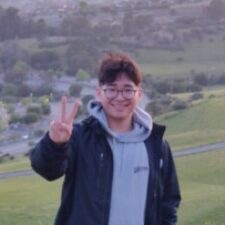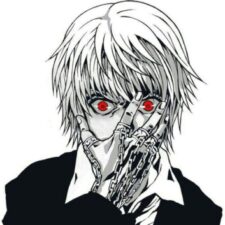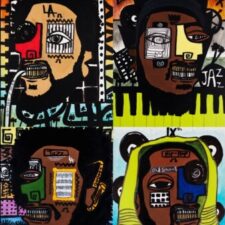You must be logged in to reply to this topic.
- Feb 9 (3 of 3) Cinematic Techniques part II
-
February 10, 2023 at 9:17 am #89703

Prof. MasielloParticipantPlease watch this second video (90 min.) on cinematic storytelling techniques:
then, like last week, please reply to these questions:
1) Name three different things you feel you learned.
2) Mention something you liked about the presentation.
3) Ask at least one question that now comes to mind about this presentation.
Please post your replies in this Discussion folder by next Thursday night at 10:00 PM.
-
This topic was modified 1 year ago by
 Prof. Masiello.
Prof. Masiello.
-
This topic was modified 5 months, 1 week ago by
 Prof. Masiello.
Prof. Masiello.
February 10, 2024 at 5:20 pm #92600
Mu SongParticipant1a. Cross-cutting is used in several ways but is often used to connect either two different scenes or form a relationship between some characters. I never really looked into the purpose of cross-cut scenes but I always enjoyed them when I was younger since I found them really interesting. It also works well when transitioning between different time periods.
1b. Lens flares are created on purpose to add a dramatic effect or highlight a certain aspect within the film in “Jesus Christ Superstar” they use lens flares to highlight a cross made with the lights.
1c. Mirrors can mean a wide variety of things such as a connection to another world in “Candyman 2” mirrors serve as a gateway for the Candyman if you repeat his name or they could reflect a character’s desire or internal struggles like in “Last Night in Soho” or even just creating a dramatic or visual appeal.
2. I liked how for cross-cutting it shows a vast amount of films that use cross-cutting however each uses cross-cutting for different reasons and it also shows different variations of cross-cutting and how it implies different things whether it is similarities, contrast, or foreshadowing.
3. Is there a theatrical reason why some films do close-ups in cars with or without windshields? Does it set a different tone or foreshadow something or is it just due to equipment?
It has to do with the bulkiness of the equipment. As per the video, older cameras were too big to be inside a real car.
https://www.imago-images.com/st/0094640131 (incomplete car while filming Psycho in 1960)
https://thesungazette.com/event/alfred-hitchcocks-psycho-1960/ (after post production)
-
This reply was modified 1 year ago by
 Prof. Masiello.
Prof. Masiello.
-
This reply was modified 1 year ago by
 Prof. Masiello.
Prof. Masiello.
-
This reply was modified 1 year ago by
 Prof. Masiello.
Prof. Masiello.
February 11, 2024 at 2:26 am #92604
Kenneth CaoParticipant1a. Mirrors can convey a character’s self reflection and emotions. For example in “Creed” it portrays the character sparring with himself making it feel like there is another person behind a mirror. It also provides a change in atmosphere like in “Enter the Dragon” where the mirrors adds a tense atmosphere leading into the conflict.
1b. Crosscutting is used to connect several perspectives and scenes where characters in each scene have a correlation with one another, for example in “West Side Story” you can see several characters singing in each scene and with crosscutting it acts like everyone in each scene is singing together.
1c. Elliptical editing provides a way to show that time has elapsed in a scene for example in “Fight club” where the character experiences a taxi ride while including the scene where he rides a plane as well.
2. What I liked about the presentation is the variety of editing techniques used to convey each scene given. For me I liked the mirrors being portrayed in “Last night in soho” because it shows the character becoming someone
they[she] wanted to be while also being the character in the mirror.3. A question that comes to mind is why some techniques are used rather than other ones for example in “The Tree of Life” they used continuous jump cuts to create a “choppy look” but I am wondering what does a choppy look provide for that scene? It was an artistic choice, Kenneth, to give the film a unique stylistic look. In the same movie, the mother character is never seen in the same dress in more than one brief scene. Just a choice… The Tree of Life is considered an “art-house” movie, certainly not a blockbuster. It is a special sort of film.
-
This reply was modified 1 year ago by
 Prof. Masiello.
Prof. Masiello.
-
This reply was modified 1 year ago by
 Prof. Masiello.
Prof. Masiello.
February 11, 2024 at 1:37 pm #92608
MehrinisoParticipant1.
– I’ve learned that the split-screen that filmmakers use is to imitate the effects of having two separate screens without having to switch between the scenes so often.
– Another thing I’ve learned is the use of mirrors in films. It can be for several different reasons such as to show the psychological damage of a character or show things that aren’t there. Importantly, it symbolizes something that’s happening in the movie.
– In addition, I have also learned that a jump cut can be used in films when a single shot is broken with a cut that makes the subject appear to jump instantly forward in time. An example is “ Lawrence of Arabia” where the scene from lit matching transitions to a sun-drenched desert.2. Something I liked about the presentation is how it shows different cinematic shots used and how the audience can see that filmmakers aren’t just limited to a few cinematic shots but have many varieties available to them to enhance their editing of the films.
3. Were the silhouette highlights used generally in older movies when the filmmaker wanted to change the scenes?
Mahriniso, I suspect silhouettes, being rather artistic yet easy and inexpensive to create, may have been used more in the past–like in older Steven Spielberg 1980s movies–than currently, but nothing prevents a filmmaker from using it now. It wasn’t for changing scenes; it was for creating a different look, for variety.
-
This reply was modified 1 year ago by
 Prof. Masiello.
Prof. Masiello.
February 11, 2024 at 4:01 pm #92612
Tshari YanceyParticipant1. Not only does mirrors reflect the emotions of the characters in a film but it can also be used as a technique for horror scene. The clip from Jordan peele ‘Us’ wasn’t shown but the main protagonist goes into a a funhouse, where she encounters a doppelgänger of herself in the house of mirrors. It ends up attacking her replacing her in the real world. Yes, that is an impressive mirror scene. I may include it next semester.
– The Split screen techniques has many different elements to it like in ‘Draft Day’ uses the images sliding into different scenes where we see two different characters converse with each other on the phone. Or in Pillow Talk it is a split screen cuts into three triangular images showcasing the three individuals on the landline.
– The last thing I learned was Elliptical editing. I always thought scenes like that were part of a montage, but I never considered that it implies passage of time.
2. The time lapse photography scenes were something I liked. Also, we see how different films incorporate them in their movies. In ‘To Die For’ the time lapse sequence is indicated by just changing the lighting.
3. Is the time lapse photography a form of Elliptical editing? are there any other ways that directors use filming techniques to show time passage? Yes, Tshari, time-lapse is in the video in the elliptical editing section. Other ways may be just showing the same actor in aging makeup to show the passage of time. In Atonement (2007), for example, the little girl has a mole on her face and is shown looking into a reflection in a window; later she is replaced by a young woman , and much later by an old woman all with the same mole and all looking into their reflections, playing the same character at different life stages.
-
This reply was modified 1 year ago by
 Tshari Yancey.
Tshari Yancey.
-
This reply was modified 1 year ago by
 Tshari Yancey.
Tshari Yancey.
-
This reply was modified 1 year ago by
 Prof. Masiello.
Prof. Masiello.
February 12, 2024 at 4:56 pm #92644
Angel PadillaParticipant1.)
– I really liked the intro part of the presentation where it discusses just how impactful the use of mirrors are in films. Whatever Happened To baby Jane was an example that was shown and that’s honestly one of my favorite psychological horror movies. I also liked the example of Carrie being shown which is another great horror movie. Lastly, I thought the example of Creed being shown was really cool because the scene carries a valuable lesson. This is one of my favorite scenes in the Rocky franchise when Rocky says, “That’s your toughest opponent. Every time you’re going in the ring, that’s who you’re up against. I believe that in boxing and I do believe that in real life.” Nicely expressed, Angel.
– I also liked the concept of cross cutting as a filming technique. It’s a unique way of showing two different character’s perspectives all through the same interval of time. The examples that I really liked was The Shining where it showed the main antagonist at first and then after that, a new scene transitions where a grass maze is being shown. It was really cool looking especially with the unsettling music in the background that aligns with the tone of the story. Furthermore, I had no idea that Slaughterhouse Five ended up getting a film adaptation, so seeing that was quite surprising since I read that book during the pandemic. It’s honestly a creative book that talks about the topic of trauma really well. I like how different intervals of time that the protagonist lived through was portrayed via the use of cross cutting. It is one of my favorite films from the 1970s, and I highly recommend it to you!
https://www.youtube.com/watch?v=yXsiwjK_cfQ This trailer is not so good, but the film is wonderful.
– One more thing from the presentation I enjoyed was how the use of lens flare can indicate the emotional tension that some characters have. I never realized how important of a filming technique that can be, since it’s used to help illustrate the strength of relationships. It reminds me of the glare I get from my glasses whenever light shines on them in a picture. Moreover, another thing I wanted to point out was backlighting serves the same purpose of a lens flare and is used to emphasized the strength of a scene. Batman Forever‘s closing shot displays a perfect use of backlighting.
2.)
– One thing I learned was how split screen is an editing technique that can be used to display two perspectives at the same time. Despite knowing what the technique does I never knew how impactful it can really be when it comes to the integrity of a scene. For example, I liked how they showed Grease cause I always found the song they showed to be catchy and I always found the split screen to be a nice touch. In the song, it talks about two opposing views of the same story where it shows that the man is clearly exaggerating the story while the woman is telling the truth. At the end of the song, it shows the split screen editing technique of the two characters singing together and it honestly adds a lot to the song’s meaning. Moreover, another example I enjoyed was also from Carrie where this editing techniques were used. The part where Carrie shows up to the prom, the screen splits and the right side shows her all bloodied up while the left side shows the constant damage and chaos she created. It honestly makes for a really intense scene and it’s really well shot. Carrie‘s director, Bran DePalma, is a master of the split screen and his horror film, Sisters, from 1972 uses it remarkably.
– Another thing I learned in this presentation was the concept of elliptical editing, which is an editing technique used to describe a passage of time. Fight Club was a great example that was shown since its constant new shots that are constantly speeding up which makes for a fast paced movie. Also, in Saturday Night Fever, elliptical editing is used when the protagonist is getting dressed. If no editing was applied, the viewer would see the protagonist look everywhere in his closet for an ideal outfit. Instead, it then cuts to the clothes being thrown on the bed, which was good because this specific action isn’t necessary to the story. That’s what elliptical editing truly stands for and it’s honestly interesting knowing the name of that editing technique now. I am happy you are appreciating these matters. I suspect you will end up liking movies even more than you already do with similar knowledge.
– Yet another thing I learned in this presentation was what jump cuts were. Jump cuts are used to show a character abruptly going to a new position hence the name jump cuts. It’s similar to elliptical editing because with the use of jump cuts, it’s used to show the passage of time. It’s slightly different because instead of a passage of time being really long, jump cuts are used within one particular scene. For example, The Royal Tenenbaums showcases a scene where a character is shaving, Jump cuts are used within that scene just to speed up the process of the hair being cut. It’s honestly a great editing technique that’s used in this movie. Jump cuts are also rather interesting and fun to see.
3.)
– I noticed that in the presentation, the use of elliptical editing was stated to constantly be found in action movies. Is there any example of action movies that are predominately known for its elliptical editing? It seems like an interesting technique that I would like to incorporate with filmmaking in the future. Maybe the Bourne Identity films are noteworthy for this.
-
This reply was modified 1 year ago by
 Prof. Masiello.
Prof. Masiello.
February 15, 2024 at 4:57 pm #92775
Alyssa skerretParticipant1) Getting an understanding of how and why mirrors often mean something ‘special’ due to mirrors reflecting a character’s emotions. As we see in the presentation, every close-up of someone’s face in the mirror can reveal fear, sadness, or anger, which is an effective tool for showing the viewer what’s happening simultaneously in multiple locations or for building tension. Finally, I also learned about lens flare and backlighting, and how it symbolizes the character’s emotions while backlighting represents drama or implies mystery. Lens flair can just be used to add beauty to a scene, or visual interest, Alyssa, not always for emotion.
2) One of the aspects of the presentation that I liked was its various demonstrations of various cinematic shots and revealing the diverse range available for filmmakers. Filmmakers can now improve their film editing with so many more alternatives available to them than just having standard shots.
3) I wonder if any filmmakers use older cinematic techniques and if so what are they, and why do they decide to use older cinematic techniques when there are more advanced techniques?
When Quentin Tarantino used a missing windshield in a fake car in Kill Bill, Vol. 1, he had the equipment to use a contemporary style with real glass and a small camera, but he chose to use the old style as an homage to the older films. He worked in a video store when he was young and watched and loved movies al the time. Filmmakers can make choices, like when CGU is available but a director chooses to use practical effects. The latest Godzilla film, Godzilla Minus One, uses rather fake looking monster deliberately. Many people actually prefer a “hand-made” look over the slickness in most effects-laden movies.
-
This reply was modified 1 year ago by
 Prof. Masiello.
Prof. Masiello.
-
This reply was modified 1 year ago by
 Prof. Masiello.
Prof. Masiello.
February 15, 2024 at 8:00 pm #92782
RafiParticipant1A.One thing I learned is in movies Mirrors can play a big role in showing the viewers what the current Character is thinking for example in the “Evil Dead 2” the Character was reevaluating what he had done to the mirror then his reflection jumps out at him and starts choking him, but then a few seconds later it is shown that it was just him who was choking himself.
1B. Another thing I learned is that directors of movies can use mirrors to show multiple angles of the actor during the shoot, for example in the movie “the lady from Shanghai” the director made the scene take place in a fun house of mirrors so he can have multiple angles of the actors for a more dramatic effect to the scene. And due to its creativity, this scene is a classic scene, Rafi.
1C. Another thing I learned from the film is that when the directors are constantly showing the same 2 characters back to back it can show how they are different but similar at the same time, for example in the movie “Rocky IV” the 2 Characters that the director is showing are very different and does things very differently but are doing it for the same reasons so that makes them similar. That is one reason for “cross-cutting.”
2. One thing I liked about the Film was how in some of the movie scenes the the actors are looking into the mirror sometimes the actor stares right at the camera from the mirror so it feels they acknowledge us.
3. One question I had about this Film is in the movie “creed” how did the camera crew not pop up on the mirrors since the mirror is covering the whole wall? They were at an angle out of range and also used a telescopic lense to make the scene look closely shot even though they were at a comfortable distance.
-
This reply was modified 1 year ago by
 Prof. Masiello.
Prof. Masiello.
-
This reply was modified 1 year ago by
 Prof. Masiello.
Prof. Masiello.
February 15, 2024 at 8:35 pm #92784
Bryan JimenezParticipant1) One thing that I learned is the mirror techniques that were shown as they can show a reflection of one’s character’s emotions and development. Secondly, the split-screen technique can be used to show people communicating over the phone, like in the film Spider-Man into the Spider-Verse when Miles was talking to his father over the phone. Lastly, the cross-cutting technique is used to show different perspectives in life between two individuals or groups of people.
2) One thing that I like about the presentation is the vast variety of lens flare as in some movie scenes it can be used to express different types of emotions between characters or scenes.
3) One question that I have about this presentation is why do some film-makers use a choppy look in certain scenes of a film? As stated above, Bryan, filmmakers often try to add visual interest into their movies since films are so visual, and many techniques chosen are options, not necessities.These can be and should be creative decisions.
-
This reply was modified 1 year ago by
 Prof. Masiello.
Prof. Masiello.
-
This reply was modified 1 year ago by
 Prof. Masiello.
Prof. Masiello.
February 16, 2024 at 11:32 am #92806
Andrew_RParticipant1. I learned that using mirrors can help view and reflect the mind of a character, The Boys (an Amazon show) uses this technique with the main antagonist Homelander to show his fear of his empire crumbling down.
A very good example, Andrew.
I learned that mirrors can be used as more than a simple transition or panning shot [you may be mixing your terminology; the video does not say anything about mirrors for these purposes: transition or panning], watching a vampire say he’s a vampire is dull but watching him do an everyday thing like get out after driving to continually drive the point that he is a vampire works to cement this fact rather than outright telling the audience every few minutes. [I think you mean showing a vampire does not reflect in a mirror is visual and better than saying he is one.] I learned that split [screen] shots are a good way to show emotions for multiple characters, but I believe that if done wrong it can break a person’s immersion in the film. [Were there any split screen shots that you feel distracted from the interaction of the characters?] Not to mention how dialogue can often get caught up in a sway where one character speaks and then the other, speech often has interruptions, pauses, and distractions just like the video clip in Till the End of Time (1946).
2. I liked how mirror shots can have direction, in “Creed” the boxer was facing himself and he was essentially training by himself. It has power in how he may need direction but he puts in the work to be better. In other mirror shots, we might see the character facing another character or directly at the camera. These 3 variations let film directors push their motifs with a little creativity. I like that small changes like these can elevate scenes and demonstrate a filmmakers direction
Well, you have hit on something: a good filmmaker uses creativity as opposed to an ordinary person. For example, when the car’s tire has a blowout in Lolita (1962), the camera is so low down I wouldn’t be surprised to learn it was in a special trench for the low angle. Was this necessary dramatically? No, but it looks creative and special.
-
This reply was modified 11 months, 3 weeks ago by
 Prof. Masiello.
Prof. Masiello.
-
This reply was modified 11 months, 3 weeks ago by
 Prof. Masiello.
Prof. Masiello.
February 23, 2024 at 12:41 pm #92913
Angel OrdonezParticipant1) Name three different things you feel you learned.
A) I learned the valuable skill of splitting the screen to show to parts at once. It even split into three parts screens at times.
B) Cutting scenes short via elliptical editing is another handy skill. It reduces the details in a process like dressing.
C) I also learned that there are more ways to tell time other than just a linear format. Adding people can be a sign of time passing. A lot of this I will be using in my own work.2) Mention something you liked about the presentation.
Ive been enjoying all the films being incorporated. It’s refreshing because I am familiar with a lot of them… Almost nostalgic that this is a class. I am also starting to enjoy these older black-and-white films.
Angel, it is part of becoming an educated person to appreciate black-and-white films. Unsophisticated adults and little kids don’t like black & white.
3) Ask at least one question that now comes to mind about this presentation.
With modern technology, are humans having to convey emotion in different ways than before? Was it harder to convince an audience a feeling then or now?
That’s a good question. Today’s moviegoers are just looking for thrills and excitement and modern technology–mostly CGI–gives them that. (Just looking at the movies that get nominated in the best acting categories. So often there are films that the average ticket-buyer has not even heard of much less seen, and their performances usually do not need the CGI.) With all the emphasis on action and quick cuts, emotion is not what most of the most popular movies offer.
Good actors can show emotion with the look of an eye, and the raising of an eyebrow. The next time The Godfather is on, watch the simplicity with which Marlon Brando, one of the best actors ever, can achieve.
Whom do you consider fine actors? When you say “then,” how far back are you going? It depends on what one is looking for, but I’d say great acting has been around since the advent of sound movies and popular actors are not necessarily great actors. They have hit on a formula, a persona, that works and only give the audience what they seek in film after film, a type. People don’t go to see a Dwayne Johnson movie for the emotion. They go because they like his easy charm and brawny looks.
-
This reply was modified 11 months, 3 weeks ago by
 Prof. Masiello.
Prof. Masiello.
September 15, 2024 at 8:29 am #95536
Adonis CParticipant1) I learned that lighting plays a crucial role in shaping a scene’s atmosphere, highlighting contrasts between characters or settings. Additionally, framing and camera angles are powerful tools in depicting relationships and emotions, such as portraying dominance or vulnerability through a character’s position in the frame. I also picked up that the use of sound, both diegetic and non-diegetic, is essential for creating emotional depth and guiding the audience’s emotional responses throughout a film.
2) I appreciated how the presentation connected theoretical concepts to real-world examples by analyzing specific film scenes. Seeing how directors use these techniques, like lighting or camera positioning, to drive a narrative or evoke emotions made the material more engaging and easier to understand.
3) How do directors find the right balance between subtle and bold techniques when framing shots? What factors guide them in choosing a camera angle that emphasizes the weightt of a scene without coming across as overly dramatic or forced?
-
This topic was modified 1 year ago by
You must be logged in to reply to this topic.


